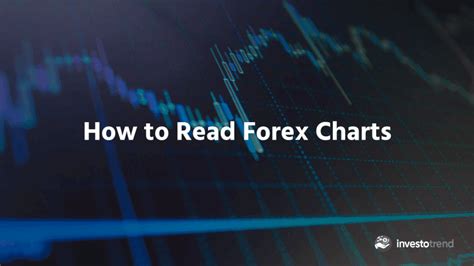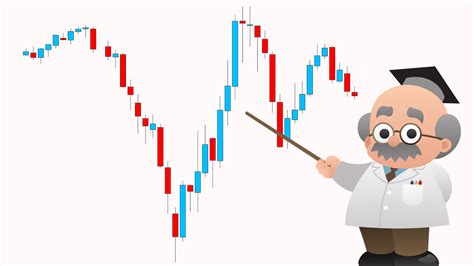Understanding how markets feel—rather than just how they move—has become a defining skill for traders seeking an edge. Forex sentiment reveals the collective psychology behind currency price action, offering insights that go beyond charts and news headlines. By interpreting what the majority of traders believe or expect at any given moment, it's possible to anticipate reversals, confirm trends, and avoid false signals. Mastering this skill transforms decision-making, as it allows traders to navigate not only what is happening, but why it’s happening beneath the surface of the forex market.

Understanding Forex Sentiment Fundamentals
Reading the emotional tone behind forex movements unlocks a deeper view of market positioning. Forex sentiment reveals the crowd’s confidence or fear, especially during shifts triggered by Inflation, Interest Rates, or geopolitical Conflict.
What Is Forex Sentiment and Why It Matters
Forex sentiment is the overall attitude or mood of traders toward specific currency pairs such as the Dollar/Yen or Euro/Franc. Unlike price charts, sentiment tracks the psychology behind market decisions.
Traders use sentiment to gauge whether the market is leaning Bullish, Bearish, or Neutral.
Sentiment analysis helps avoid crowd traps by identifying overbought or oversold positioning.
It enhances clarity during major events like Interest Rates announcements from the Federal Reserve or European Central Bank.
Currency trends often begin with a shift in sentiment before a breakout appears on technical charts.
Interpreting sentiment sharpens entries for Day Trading and Swing Trading, especially when combined with Economic Indicators like GDP and Consumer Confidence.
How Forex Sentiment Differs from Technical and Fundamental Analysis
Sentiment offers a third dimension of market reading—beyond what’s visible on price charts or found in economic data releases. While technical analysis focuses on past price action and patterns, and fundamental analysis dives into macroeconomic data and policy decisions, sentiment reflects how traders are reacting to those very inputs in real time.
For example, a stronger-than-expected Manufacturing PMI may be fundamentally bullish for the Pound. However, if the market has already priced in optimism, and sentiment is overly Bullish, a contrarian drop can follow. Here, sentiment helps interpret the reaction, not just the event.
Major Sources of Forex Sentiment Data
Reliable data feeds sentiment interpretation. These are the most commonly used sentiment sources in forex trading, supported by institutional and retail flows:
| Source | Description | Entity Linkage Examples |
|---|---|---|
| Commitment of Traders (COT) | Shows futures positioning from large institutions. | Useful during Fed or ECB interest rate speculation |
| Retail Positioning Tools | Tracks open trades from retail brokers. | Exposes herd behavior in Dollar/CAD or AUD/NZD |
| Sentiment Indexes | Aggregate market views across news, brokers, or economic optimism. | Reflects Cautious or Pessimistic tones post-Trade War news |
| Volume and Open Interest Charts | Measures strength of current moves. | Confirms Bearish or Bullish intensity post-Brexit headlines |
| News Sentiment Analyzers | Parses news headlines for optimistic/pessimistic tone. | Sensitive to Elections, Sanctions, or sudden Conflict |
Understanding the origin of data reveals how sentiment forms in reaction to Unemployment data, Durable Goods Orders, or aggressive statements from the Bank of Japan or Swiss National Bank.
The Role of Market Participants in Shaping Sentiment
Forex sentiment is the reflection of positioning by different market participants—each with unique motivations and behaviors.
Retail Traders – Often reactive and trend-following, they are susceptible to false breakouts and news hype.
Institutional Traders – Including hedge funds and banks, these participants follow models aligned with macro data and Central Bank policies.
Central Banks – Through policy signals and official statements, institutions like the Reserve Bank of Australia or People's Bank of China influence long-term sentiment cycles.
High-Frequency Traders (HFTs) – Their short-term scalping tactics can distort immediate sentiment readings during high-volatility events like CPI releases or sudden Policy Change.
Speculators and Carry Trade Investors – Driven by Interest Rates differentials and macro expectations, they add momentum to Bullish or Bearish sentiment waves.
When a sentiment shift begins, understanding who is acting and why offers a powerful edge. Whether it’s a Cautious tone from the Bank of England or rising Retail Sales in the Eurozone, traders must read not just what is said, but how the market digests it.

Interpreting Sentiment Indicators in Real Time
Trading success often hinges on real-time decisions shaped by how the market feels, not just what it shows. Forex sentiment indicators reveal shifts in trader psychology during volatile events, central bank signals, or data like Inflation and Unemployment.
Using the Commitment of Traders Report (COT) to Gauge Sentiment
The COT report, released weekly by the Commodity Futures Trading Commission, provides a deep view into institutional positioning. Unlike day-to-day price movements, this tool uncovers whether major players such as hedge funds and asset managers are leaning Bullish or Bearish across currencies like the Euro, Pound, or CAD.
Commercial vs. non-commercial positions help differentiate hedging from speculation.
Bullish positioning by asset managers in Dollar futures may forecast a macro-driven rally.
Shifts in sentiment toward the Yen during Policy Change signals from the Bank of Japan often precede major reversals.
Interpreting extremes in long or short contracts can indicate an Uncertain or overly Optimistic crowd—prime for corrections.
The COT is not a timing tool but reveals intention. Combined with recent events—like a hawkish tone from the Federal Reserve or rising Trade Balance pressure—it becomes a sentiment compass.
How Retail Trader Positioning Influences Sentiment Charts
Retail positioning data offers a contrarian view that can be critical during unpredictable market phases. Brokers often release live sentiment dashboards, showing how many retail traders are long or short on key pairs like AUD/USD or NZD/JPY.
| Currency Pair | % Long (Retail) | % Short (Retail) | Sentiment Bias | Possible Interpretation |
|---|---|---|---|---|
| EUR/USD | 74% | 26% | Retail Bullish (Contrarian Bearish) | Majority long suggests downside risk if sentiment is extreme |
| GBP/JPY | 35% | 65% | Retail Bearish (Contrarian Bullish) | Bearish crowd sentiment could precede an upward breakout |
| USD/CAD | 50% | 50% | Neutral | Mixed sentiment may signal lack of conviction or range-bound action |
| AUD/NZD | 80% | 20% | Overly Optimistic | Excessive optimism suggests a potential swing reversal |
| USD/CHF | 30% | 70% | Strong Bearish Bias | Traders positioning against Dollar may get squeezed post-FOMC |
Retail traders often overreact to headlines—such as sudden Elections or sanctions. Spotting crowd positioning around these emotional moments can reveal highly actionable sentiment shifts.
Tracking Open Interest and Volume as Sentiment Tools
Step 1: Begin by monitoring Open Interest (OI) in futures markets for currency contracts tied to the Dollar, Yen, and CNY. A rise in OI during a price rally suggests commitment and a Bullish confirmation.
Step 2: Combine OI with volume to gauge strength behind moves. An increase in both during a GBP/USD surge post-Brexit policy statement indicates conviction behind the move.
Step 3: Watch for divergence. If price rises but volume and OI stall, this may indicate a weakening trend or fakeout—often seen around GDP or Retail Sales releases.
Step 4: Apply to different market states. In risk-off environments where sentiment turns Pessimistic, volume spikes in safe-haven currencies like the Yen tend to precede sharp pullbacks in risk pairs.
Step 5: Use these tools in tandem with other indicators like COT or retail positioning to validate sentiment patterns during major announcements from the Reserve Bank of Australia or Swiss National Bank.
Reading Sentiment in Correlation with Volatility Spikes
Sentiment becomes most volatile when the unexpected occurs. Inflation surprises, sudden Conflict, or rate shocks from the European Central Bank can trigger a sharp sentiment pivot in seconds. In such moments, observing how sentiment aligns—or misaligns—with volatility is essential.
If a Pessimistic tone is already priced into the market and an event comes in better than expected, the reaction may be surprisingly Bullish. On the other hand, high expectations in Consumer Confidence that fall short can lead to a rapid unwinding of long positions. The relationship between surprise and expectation is where sentiment pivots fastest.
Sentiment charts often lag behind price—but volatility, especially as measured by options pricing or intraday spikes, tells the real-time truth. When traders begin exiting positions en masse, sentiment collapses. Recognizing this correlation offers tactical precision.
Sentiment Divergence Signals for Entry and Exit Points
Identify the sentiment bias—Bullish, Bearish, or Neutral—using retail dashboards or positioning tools.
Compare with price action: if the Euro is falling while sentiment remains overwhelmingly Bullish, it may signal trapped longs.
Watch for reversal patterns forming at key technical zones, especially during low Consumer Confidence or sharp Unemployment shifts.
Confirm divergence using complementary indicators like RSI or MACD. Sentiment should ideally reverse before price does.
Execute when divergence aligns with a fundamental narrative—such as a surprise rate hike by the Bank of England shifting market tone.
Divergence becomes the signal when price action and crowd behavior speak different languages. In a forex world ruled by reaction, this mismatch is often the trader's most profitable cue.
Applying Forex Sentiment to Currency Pairs and Strategies

Understanding sentiment isn’t just about reading charts—it's about knowing how sentiment shapes specific currency pairs and how it integrates with trading strategies. Forex sentiment reveals key moments to enter or exit trades in pairs like Dollar/Yen or Euro/Franc.
Sentiment Patterns in Dollar vs. Yen During Risk-Off Events
During risk-off events, sentiment plays a pivotal role in driving the Dollar/Yen (USD/JPY) pair. Typically, when markets are spooked by events like geopolitical Conflict or surprising Inflation reports, the Yen tends to gain strength as a safe haven, while the Dollar shows mixed sentiment.
Bullish Sentiment for Yen: As traders seek shelter, the Yen is bought in place of riskier assets.
Bearish Sentiment for Dollar: Despite the US being seen as a global reserve, fear of economic slowdown or Unemployment figures can weaken the Dollar.
Historical Patterns: When sentiment around the Federal Reserve’s rate hikes shifts toward caution, USD/JPY tends to retreat.
Intermarket Divergence: Sharp changes in the US 10-year Treasury yield can signal a shift, helping traders gauge the next move in USD/JPY.
In volatile periods, such as political instability or natural disasters, the market’s sentiment towards these currencies changes rapidly, providing ample opportunities for swing traders.
Bullish vs. Bearish Crowd Sentiment in Euro/Franc Trading
In the case of EUR/CHF, the sentiment between the Euro and Swiss Franc tends to reflect economic conditions and political factors, especially during moments of regional crisis or monetary policy changes by the Swiss National Bank.
Bullish Euro Sentiment: During periods of European economic recovery (e.g., after GDP growth or positive Retail Sales data), the Euro is seen as stronger.
Bearish Swiss Franc Sentiment: A less dovish stance from the Swiss National Bank, or a reduction in Quantitative Easing, may lead to a weaker Franc.
Neutral Sentiment: In cases of geopolitical tensions (like Trade War or Brexit developments), market sentiment often becomes mixed, creating uncertainty in the EUR/CHF pair.
Sentiment analysis shows how critical the central bank stance is in driving currency movements, making it essential for traders to track both economic reports and market positioning.
Optimistic Sentiment Signals in AUD/NZD Swing Trades
Optimistic sentiment in currencies like AUD and NZD is heavily influenced by commodity prices and overall market risk appetite. When the market leans Bullish, particularly during global growth periods, both the Australian Dollar and New Zealand Dollar tend to outperform.
| Indicator | Signal Type | Expected Outcome |
|---|---|---|
| RBA Rate Hike | Bullish | AUD strengthens as higher interest rates attract investment. |
| Positive GDP Growth | Optimistic | Both AUD and NZD likely to rally on economic expansion. |
| Commodity Price Surge | Bullish | Growth in global demand for metals (iron ore, etc.) drives AUD higher. |
| Geopolitical Stability | Neutral | Increased global optimism for trade and growth. NZD benefits. |
The outlook for AUD/NZD in swing trades hinges on global economic signals—specifically optimism in key industries like mining or agriculture.
Sentiment-Driven Carry Trade Opportunities in CNY/CAD
Carry trades, where traders borrow a low-yielding currency to invest in a high-yielding one, are deeply tied to market sentiment and interest rate differentials. For CNY/CAD, sentiment shifts can reveal high-probability carry trade setups.
Bullish Sentiment for CAD: When the Bank of Canada raises interest rates or adopts hawkish rhetoric, the CAD strengthens, creating an attractive carry trade.
Bearish Sentiment for CNY: A weakening of the Chinese economy or government actions to lower interest rates may drive bearish sentiment toward the Yuan.
Risk-Reward Balance: A high-interest-rate environment in Canada compared to China’s lower rates can create favorable conditions for a CNY/CAD carry trade.
Traders must assess global growth trends, particularly in commodity markets, to gauge sentiment around the Canadian Dollar and the Chinese Yuan.
Using Sentiment Alignment for Day Trading Scalps
Day traders can utilize sentiment alignment to enter high-probability scalping opportunities by looking for quick, small price moves.
Identify Sentiment Drivers: Pre-market news, central bank decisions, and Economic Indicators like Services PMI are strong sentiment drivers.
Spot Sentiment Shifts: As sentiment turns Bearish or Bullish on the USD/JPY pair after a Federal Reserve meeting, it creates a scalping window.
Scalp the News: Market-moving events, like a surprise interest rate change or CPI release, can immediately shift sentiment and fuel short-term momentum.
Use Tight Stop-Losses: Due to fast sentiment shifts, day traders use tight risk management tools to prevent large drawdowns in volatile times.
By aligning with short-term sentiment, day traders can capitalize on quick movements, maximizing gains during market turbulence.
Combining Sentiment and Hedging in Position Strategies
Hedging allows traders to manage risk by holding opposing positions. When combined with sentiment analysis, it can offer a powerful tool to navigate uncertain market conditions.
Sentiment as a Hedge Trigger: When sentiment is overly optimistic on a currency pair like EUR/USD, a trader might hedge their position with an opposing position in a different pair, such as GBP/USD.
Risk Control: Hedging helps lock in profits when sentiment starts to shift, particularly during volatile periods such as central bank policy changes or Unemployment data releases.
Portfolio Balance: Combining sentiment-driven trades with hedging strategies, such as using options or short-term futures contracts, provides protection against unexpected market moves, like in the case of geopolitical events or political instability.
A well-executed hedge allows for participation in market moves while protecting against sentiment misreads or sudden reversals in currency markets.
By applying sentiment-based strategies to specific currency pairs, traders can better align their positions with market psychology. Whether it's leveraging optimistic sentiment for AUD/NZD trades or hedging against unforeseen geopolitical risks, understanding sentiment is key to managing risk and maximizing returns.
Macro Drivers Behind Sentiment Shifts
Macro factors such as central bank policy, inflation, GDP, and geopolitical events play a significant role in shaping forex sentiment. These drivers influence how currencies like the Dollar, Euro, and Yen behave, offering traders crucial insight into potential market shifts.
How Central Bank Policy Affects Trader Sentiment Globally
Central banks are pivotal in guiding market sentiment, especially with decisions regarding Interest Rates, Quantitative Easing, or tightening measures. The Federal Reserve’s policy stance, for instance, can trigger global sentiment shifts.
Rate Hikes and Sentiment: When the Federal Reserve raises Interest Rates, it can lead to a stronger Dollar as traders anticipate higher yields. In contrast, dovish actions (rate cuts) can foster a more Bearish sentiment, weakening the Dollar.
Quantitative Easing (QE): Large-scale bond-buying programs by the Bank of Japan or the European Central Bank (ECB) can shift sentiment towards riskier assets, pushing the Yen and Euro lower, respectively, while boosting the appeal of commodities.
Forward Guidance: The ECB’s statements regarding future monetary policy can change market sentiment even before actions are taken, creating either an Optimistic or Pessimistic outlook depending on the bank’s tone.
These central bank actions can significantly influence market behavior, often long before the actual price shifts are reflected on forex charts.
The Influence of Inflation and GDP on Long-Term Sentiment Cycles
Inflation and GDP growth are foundational to understanding long-term sentiment shifts in currency pairs. These economic indicators provide traders with insights into the potential health of an economy and thus the future direction of its currency.
| Indicator | Impact on Sentiment | Currency Behavior Example |
|---|---|---|
| Rising Inflation | Bullish for commodities, Bearish for currency | EUR/USD weakens as Inflation rises and the ECB remains dovish |
| GDP Growth | Optimistic sentiment for economy | USD strengthens with strong US GDP growth, signaling economic health |
| Interest Rate Expectations | Reflects central bank sentiment towards inflation control | The Bank of Canada hikes rates amid rising Inflation, CAD strengthens |
| Deflation | Negative sentiment for risk assets | Japan’s deflationary pressures lead to weaker Yen, stimulating flight to safety |
A high inflation rate typically prompts central banks to adopt a more Hawkish stance, which can increase demand for the currency. Conversely, low GDP growth or stagflation (inflation with stagnant growth) may foster Bearish sentiment, making risk assets less attractive.
Geopolitical Triggers That Distort Short-Term Sentiment
Geopolitical events like Brexit, elections, or trade tensions are catalysts that can rapidly distort short-term sentiment. These events create uncertainty, leading to market reactions that often deviate from economic fundamentals.
Brexit: As Brexit negotiations unfold, market sentiment swings sharply between optimism and pessimism regarding the Euro and Pound. A positive development can trigger a sharp rally in the Pound, while fears about a no-deal Brexit can lead to a more Bearish outlook.
Trade Wars: Tensions between the US and China or other nations lead to Uncertainty and a flight to safe-haven currencies like the Swiss Franc or Yen.
Elections: Uncertainty around political candidates' economic policies can affect sentiment, especially for currencies like the Euro or GBP. The 2016 US Presidential Election is an example of how market sentiment fluctuates dramatically as traders anticipate the economic implications of political change.
The immediate impact of these events can create volatility that overshadows longer-term economic trends, making it crucial for traders to stay alert to short-term sentiment shifts.
By understanding how these macro drivers shape sentiment, traders gain the ability to predict and capitalize on shifts in market mood, especially during volatile periods when currencies like the Yen, Dollar, and Euro react strongly to central bank actions, economic reports, and geopolitical risks.
Sentiment Timing and Risk Control
Effective forex trading depends not just on recognizing sentiment, but knowing when to act on it. Sentiment timing, paired with strategic risk control, helps traders avoid impulsive entries and navigate volatility caused by central banks and economic data releases.

Cautious vs. Aggressive Sentiment Timing During High Impact News
Traders often misjudge timing when navigating high-impact events like Non-Farm Payrolls, CPI surprises, or interest rate shifts by the Federal Reserve or the Bank of England. Knowing when to act—or when to wait—can define long-term results.
Cautious Timing
Wait for post-announcement confirmation, especially with conflicting market reactions.
Use low-leverage setups around high-volatility events like Elections or unexpected Brexit headlines.
Let Unemployment or Inflation numbers settle before positioning, reducing exposure to market noise.
Aggressive Timing
Enter trades based on pre-positioned sentiment expectations, such as a Pessimistic bias leading into a GDP release.
Target breakout trades in pairs like USD/JPY or CAD/CHF, when sentiment aligns with price and volume.
Cautious entries minimize risk, while aggressive ones exploit early momentum—but both depend on accurately gauging forex sentiment in real time.
Avoiding Sentiment Traps and Overcrowded Trades
When too many traders lean Bullish or Bearish, the market becomes vulnerable to sharp reversals. These traps are common during speculative hype and often triggered by policy announcements or sharp changes in Retail Sales and Durable Goods Orders.
Recognize Overcrowded Sentiment
Sentiment dashboards showing 80% of retail traders long on GBP/USD after Bank of England dovishness = trap risk.
Watch for Reversals After Extreme Moves
After rapid CAD strength on rising Oil prices, sentiment becomes overly Optimistic, risking reversal.
Use Contrarian Indicators
COT reports or real-time position ratios highlight unsustainable market positioning.
Plan Exit Strategies
Protect gains during sentiment peaks, especially when crowd bias conflicts with fundamentals.
Track Sentiment Decoupling
When market moves no longer match sentiment tone, expect reversals.
Avoiding sentiment traps means staying skeptical of crowd consensus and watching for the signs of sentiment saturation.
Using Sentiment for Stop Loss Placement and Trade Duration
Forex sentiment doesn’t just signal entries—it helps fine-tune exits and risk limits. By understanding where traders are positioned and when crowd psychology is shifting, traders can place stop losses more intelligently and hold trades with greater confidence.
| Sentiment Condition | Suggested Stop Strategy | Trade Duration Tip |
|---|---|---|
| Bullish Crowd Near Resistance | Wider stop above the level due to likely fakeouts | Short-term hold; take profits early |
| Bearish Sentiment into Support | Tight stop just below, protect from reversals | Allow room for upside rebound |
| Mixed Sentiment in Consolidation | Use ATR-based dynamic stops | Avoid long holds during uncertainty |
| Positive Shift on Key Data | Trail stop after confirmation | Extend duration for momentum plays |
| Overcrowded Retail Positioning | Contrarian stop outside range extremes | Reduce exposure; manage for mean reversion |
Effective stop placement and trade duration are enhanced by real-time sentiment flows, especially during announcements by the Bank of Japan, the Reserve Bank of Australia, or during global risk sentiment shifts.
How Mixed Sentiment Can Signal Reversals or Fakeouts
Not every moment of indecision signals stagnation. Mixed sentiment—neither clearly Bullish nor Bearish—often precedes sharp breakouts or fakeouts, especially around complex macro events such as Trade War negotiations or Housing Starts data.
Mixed positioning reflects a market searching for direction. For example, when sentiment around the Euro is divided due to conflicting CPI and GDP data from the Eurozone, price may drift sideways before violently breaking in either direction. This indecision frustrates breakout traders and swing traders alike, drawing them into false starts.
Traders should treat mixed sentiment like a pressure valve. The longer the indecision persists, the greater the energy when direction emerges. Key support and resistance zones become the battleground, and fakeouts are common. Patience and confirmation from volume or volatility indicators become essential tools in these zones.
Building a Sentiment-Based Risk Management Plan
Using sentiment as a foundation for risk control adds clarity and structure to trade planning. Whether trading Franc strength during Conflict or AUD weakness amid Chinese growth fears, sentiment clarity protects against emotional decision-making.
Define Sentiment Thresholds
Only trade when crowd positioning reaches a defined Bullish or Bearish skew.
Use Sentiment to Scale In or Out
Scale out as sentiment becomes extreme, reducing exposure in pairs like EUR/CHF or USD/CAD.
Monitor Sentiment Swings Around Key Events
During Swiss National Bank policy statements or U.S. CPI releases, watch for rapid sentiment flips that demand risk rebalancing.
Integrate With Position Sizing Rules
Increase size when sentiment and fundamentals align; reduce it when sentiment is erratic or Neutral.
Include Sentiment in Trade Journaling
Record sentiment state at entry and exit for review to refine future setups.
A sentiment-aligned plan ensures discipline under pressure and prepares traders to adapt to shifting psychological tides in the forex market.
Advanced Sentiment Mapping and Automation
Forex sentiment can be transformed into systematic trading intelligence using technology. From visual dashboards to algorithmic models, traders can now quantify optimism or fear across currencies like the Dollar, Euro, or AUD with precision and speed.
Visualizing Sentiment Layers with Custom Dashboards
Layered sentiment dashboards help consolidate multiple sentiment indicators in one place—essential when tracking currency pairs impacted by fast-moving geopolitical events or macro shifts like Trade Balance or Unemployment.
Combine retail positioning from major brokers with institutional sentiment from the Commitment of Traders report.
Overlay Economic Indicators like GDP or Consumer Confidence to weigh optimism or pessimism by region.
Track how central banks like the Bank of Canada or Reserve Bank of New Zealand are shifting tone and how this correlates with Bullish or Bearish momentum in CAD/NZD.
Use heatmaps to compare real-time sentiment strength across safe-haven and risk-sensitive currencies, including the Yen, Franc, and AUD.
Build modular views to track volatility-adjusted sentiment spikes before and after Interest Rates announcements.
Advanced dashboards give traders a clear view of which currencies are sentiment-driven and which are reacting to raw fundamentals.
Sentiment-Based Algorithmic Trading Models
Automating sentiment means transforming raw psychological inputs into decision rules. When the market swings from Neutral to Bullish sentiment ahead of a Federal Reserve rate hike, algorithms can respond faster and more objectively than discretionary traders.
Step 1: Input historical data—sentiment indicators, COT reports, and economic triggers like Retail Sales or Durable Goods Orders.
Step 2: Define parameters—entry on rising Bullish sentiment confirmed by volume spikes in Euro or Pound pairs.
Step 3: Apply filters—exclude trades during high-volatility periods linked to Elections or unexpected Policy Change announcements.
Step 4: Backtest over various cycles—compare performance across different phases of Inflation, GDP growth, or geopolitical Conflict.
Step 5: Deploy model with risk control, using stop-losses and dynamic position sizing based on sentiment volatility.
Well-designed sentiment algorithms can execute high-frequency trades in CAD/CHF or CNY/USD pairs, balancing emotion with structured discipline.
Historical Sentiment Data and Pattern Recognition
The past tells more than just what price did—it shows how traders felt. Sentiment history offers insight into repeated behavioral patterns in response to Inflation, central bank shifts, and economic events like Services PMI or Housing Starts.
| Sentiment Pattern | Historical Trigger | Currency Reaction Example | Strategic Use Case |
|---|---|---|---|
| Extreme Bearish Sentiment | Post-conflict pessimism in markets | Yen rally following geopolitical instability | Safe-haven positioning |
| Divergence From Price | Mixed sentiment as price continues rising | AUD/USD peak post-commodity boom | Identify topping formations |
| Sentiment Cycle Repeats | After every Fed tightening phase | Dollar weakens as sentiment lags | Trend reversal forecasting |
| Optimism Before Data Miss | High sentiment before GDP miss | Pound falls despite prior positive tone | Avoid front-running positive crowd bias |
Traders can extract repeatable edge by knowing how sentiment behaved during earlier tightening cycles from the Bank of England or People's Bank of China and comparing it to now.
Multi-Timeframe Sentiment Alignment for Strategic Edge
Not all sentiment signals are created equal. What looks Bullish on the hourly chart may be contradicted by Bearish sentiment on the daily or weekly level. Traders aiming for higher accuracy use multi-timeframe alignment to resolve these contradictions.
At the intraday level, a surge in Positive sentiment during an Interest Rates press conference might suggest strength in the Euro. But if the weekly sentiment chart still shows dominant Bearish tones due to long-term Unemployment concerns or slowing GDP, the rally may not sustain.
Strategic alignment involves:
Confirming short-term scalping setups in AUD/CAD only when daily sentiment is also supportive.
Avoiding trend trades in NZD/USD when weekly and intraday sentiment diverge, especially during Neutral tone from the Reserve Bank of New Zealand.
Waiting for consistent sentiment confirmation across multiple frames before executing swing trades in Pound or Franc pairs.
Alignment across timeframes filters out noise and strengthens conviction, especially when sentiment interacts with major economic narratives.
Conclusion
Reading forex sentiment charts with precision requires more than recognizing patterns—it demands a refined sense of how trader psychology, economic conditions, and geopolitical dynamics interact across currencies. The behavior of Dollar, Euro, Yen, and other major currencies is rarely random; sentiment often reveals the deeper drivers of movement before price catches up. As traders deepen their understanding of bullish and bearish bias, learn to track positioning, and recognize when optimism turns to caution, they move from reaction to anticipation. Sentiment isn’t just a tool—it becomes a lens through which market narratives are decoded and strategies are sharpened. When merged with knowledge of interest rates, inflation, central bank actions, and geopolitical events, forex sentiment transforms into a core part of a sustainable trading edge.
Forex sentiment reflects the prevailing attitude of traders toward a specific currency pair. It helps traders gauge whether the crowd is mostly buying or selling, which can offer contrarian signals or confirmation depending on the strategy used.
Inflation often shifts sentiment toward caution, especially in developed currencies
Unemployment data can spark optimism or pessimism depending on the trend
GDP growth boosts bullish sentiment, while contraction triggers fear
Interest rate changes typically generate the strongest sentiment reactions







